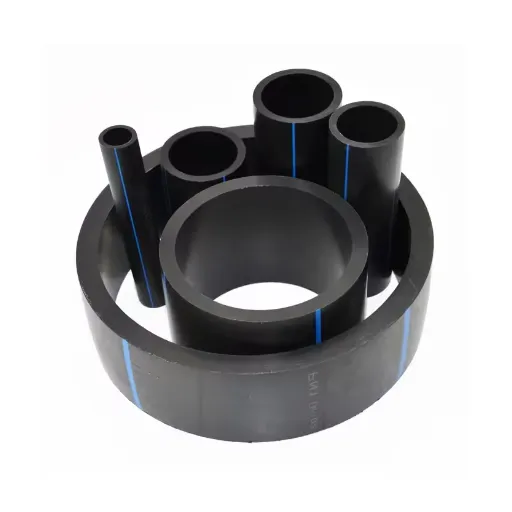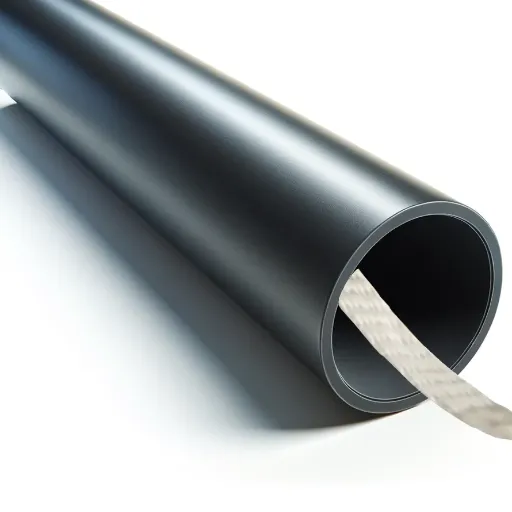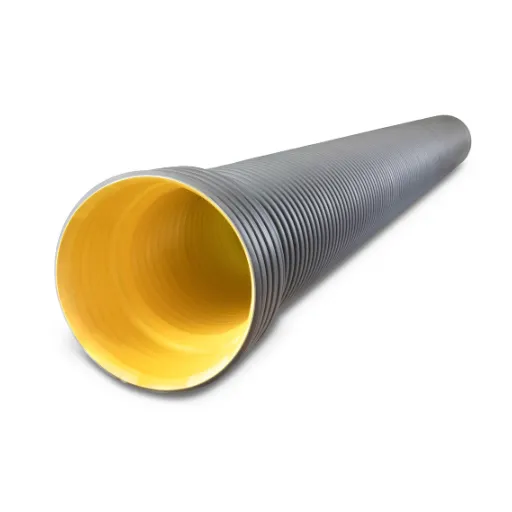The introduction of high-density polyethylene (HDPE) pipes has changed the entire dynamics of water transportation as they are more flexible, durable, and economical. This document is focused on 3 / 4 HDPE pipes which are fabricated for use in residential homes, irrigation systems, and agriculture because of their effectiveness and utility. This article will outline the main attributes of HDPE tubing, how it is produced, and its benefits relative to ordinary pipe materials. Further, we shall elaborate on particular uses of 3 / 4 HDPE pipe, as well as the techniques of placing them and the maintenance that is needed for best results. This document is structured in such a way that whether you are a professional installer or a layman trying to understand the fundamental concepts surrounding the use of HDPE pipes, this is a great starting point for making sound decisions related to your water system infrastructure.
What is 3/4 HDPE Pipe and Its Common Applications?
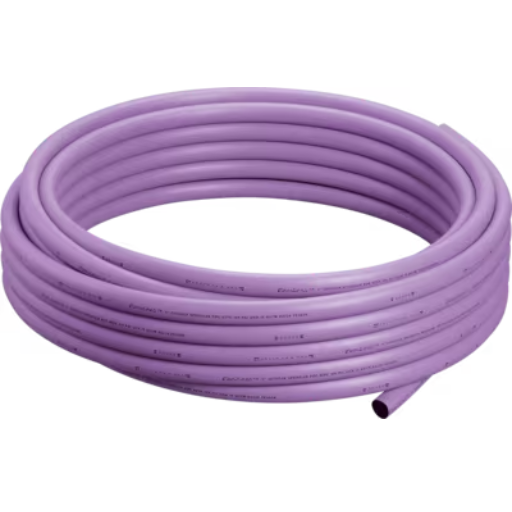
A 3/4 inch HDPE pipe is used for the distribution of potable water, agricultural irrigation systems, and industrial fluid transfer systems. It is also extremely useful in residential plumbing to supply water because of its non-toxic nature and long service life. The pipe withstands varying environmental conditions and chemical exposure which makes it suitable for both underground and overground installation. A 3/4 inch HDPE pipe is best suited for specific small to medium-scale applications because of its three quarters inch diameter.
A 3/4 inch HDPE pipe is made of high density polyethylene and is perfect for high pressure systems due to its lightweight properties alongside it being easy to installation. HDPE plastic piping is known for its flexibility, durability, and resistance to corrosion which is why 3/4-inch HDPE pipes are popular around the globe.
Understanding High-Density Polyethylene (HDPE) Pipe
The benefits and the high level of performance offered by High-Density Polyethylene (HDPE) pipe are unmatched. It’s high tensile strength and ductility coupled with moderate temperature conditions provide the ability to withstand extreme temperature ranges without cracking or degradation. This together with an incredibly lightweight composition that enables effortless transportation and installation is what makes it highly desirable. In addition to this, it also offers exceptional durability, resistance to corrosion, high flexibility and most importantly is chemically inactive, providing ideal suitability for carrying potable water, chemicals or other fluids. All of these factors make it perfect for dependable long-term usage.
Popular Applications for 3/4 HDPE Pipe
Water Distribution Systems
The municipal and residential water supply systems use HDPE pipes due to their leak free joints, resistance to corrosion, flexibility and ability to withstand pressure. This also makes them an optimal solution for the delivery of potable water over long distances.
Irrigation Systems
In agricultural and landscaping irrigation systems, 3/4 HDPE pipes are frequently used. These pipes are capable of withstanding varying environmental conditions, rendering them efficient and cost effective in the transportation of water to crops or landscaped areas.
Industrial Fluid and Chemical Transport
3/4 HDPE pipes have chemical inertness, making them suitable for use in industrial applications for the safe transport of chemicals, slurry and other fluids. Their minimal risk of contamination makes them a vital component in processing plants or factories.
Telecommunications and Cable Conduits
With low weight but strong structure, these pipes are used as protective conduits for optic fibers and other communication cables. These pipes are flexible making them easier to deploy in challenging areas without compromising protective qualities. This guarantees secure solutions for the transmission of data and power.
Natural Gas Distribution
HDPE pipes are also greatly utilized in the distribution of natural gas, facilitating the safe and efficient transportation of gas under different pressures. Their ability to withstand cracking and environmental strain ensures dependable operation in crucial infrastructure.
These different applications show that 3/4 HDPE pipes exhibit versatility and reliability across numerous industries.
Benefits of Using HDPE in Water Systems
HDPE pipes have a lot of benefits to possess for water systems like adaptability, durability and cost effectiveness. One of the primary advantages is their high degree of corrosion and chemical resistance, which guarantees the pipes will have a longer service life in volatile water and wastewater conditions. Furthermore, unlike conventional materials, HDPE will not corrode, pit or decay.
Another important advantage is their great flexural and impact strength that allows for ease of installation for both trenchless and traditional methods. In addition, HDPE pipes use a fusion welding technique during their construction that greatly minimizes the possibility of leakage through monolithic jointing. The HDPE pipes possess great jointing which significantly reduces water migration and increases system efficiency.
Technically, the HDPE pipes have a high strength to weight ratio. Their tensile strengths range from 20 to 37 MPa (megapascals), and their density values are from 0.94 to 0.96 g/cm³. They also have a great resistance to pressure. The pipes have various grades of pressure that can be used for applications up to 25 bar, depending on the wall thickness and diameter of the pipe.
Moreover, the internal surface of HDPE pipes is designed such that friction losses are significantly reduced leading to a constant flow rate being maintained over time. Due to this design, these pipes have a C-factor of approximately 150 in Hazen-Williams which is retained through the lifespan of the pipes. This results in a reduction of pumping costs which in the end saves energy for the operators.
Furthermore, the pipes are UV resistant and can endure severe regional climatic changes which allows the pipes to be used externally and also buried underground. In addition to these attributes, their ability to be recycled places the HDPE pipes among the most eco friendly options for efficient water resources management systems.
How to Choose the Right 3/4 HDPE Pipe for Your Project?
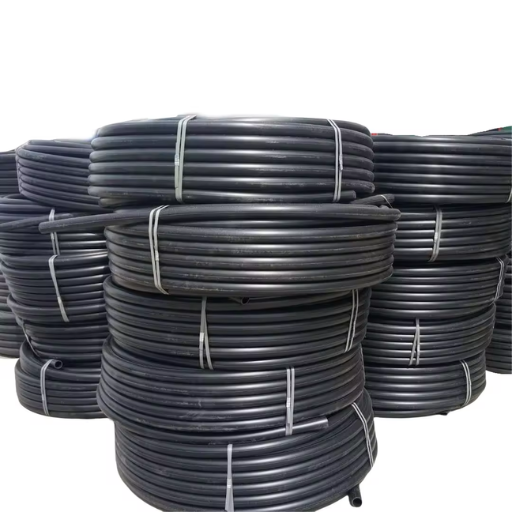
When selecting a 3/4 HDPE pipe, you need to pay careful attention to the following aspects for it to serve your purpose effectively:
Pressure Rating: Every system has a designated pressure setting, and in your case, you would need to analyze this and assume a pipe class rating that can bear the weight, e.g., PN or SDR ratings.
Temperature Resistance: The operating temperatures of your application must be determined. Though HDPE pipes are usable in both hot and cold temperatures, make sure the environment aligns with the expectations of the pipe.
Chemical Compatibility: The pipe’s effectiveness when exposed to certain chemicals (for industrial or agricultural use) should be verified. Though corrosion resistance is one great feature of HDPE pipes, it is still advisable to validate for specific scenarios.
Standard Compliance: Check that the pipe adheres to the basic standards and rules about safety (ASTM, ISO) for it to be certified as reliable.
Installation Requirements: Determine how easily the pipe can be installed, what kind of joints will be used butt fusion and electrofusion, and where the pipe will be mounted whether above ground, underground or submerged.
Once you understand each of these criteria, you will be able to choose the most effective and sustainable 3/4 HDPE pipe suitable for your project.
Understanding HDPE Pipe Specifications (SDR, PSI, PE4710)
When defining the specifications of an HDPE pipe, one must pay attention to key details like the Standard Dimension Ratio (SDR), the pressure rating of the pipe (PSI), and the material designation such as PE4710 which are essential for knowing the applications of the pipe.
Let us now consider what it is and how is it useful in determining the strength of a pipe.
SDR or Standard Dimension Ratio is the ratio between the diameter of a pipe and the thickness of its walls. A high SDR value means that the wall thickness is lower, whereas a low value means higher wall thickness which allows for higher pressure. For example,
SDR 11, which is common for PE4710 pipes, means that the pipe is of sufficient strength to tolerate high pressure and is rated for 160 PSI when the water temperature is 73 degrees.
SDR 17 is used for moderate pressure applications and is rated for 100 PSI when the water temperature is 73 degrees.
How is PSI calculated for HDPE pipes?
PSI or pounds per square inch is a measure of the pressure the pipe can withstand. This is dependent on the SDR and material properties of the pipe itself. For SDR 11 PE4710 ensure compliance with industry standards like ASTM D3350 to ensure that the pipe can authentically tolerate the pressures rated.
What is the definition of PE4710?
PE4710 is a grade of polyethylene with high performance properties. It possesses significantly greater tensile strength, better resistance to slow growth of cracks, and superior long-term hydrostatic performance than its predecessor PE3608. These superior properties make PE4710 suitable for applications like municipal water supply or gas distribution which are much more challenging.
Assess these technical factors SDR, PSI, and material grade PE4710, and rest assured that the chosen HDPE pipe will perform adequately and withstand the strain of the intended application. Ensure that the specifications do not differ from the standards set by relevant authorities, like ASTM F714, and AWWA C906, to ensure system performance and compliance.
Comparing 3/4 HDPE Pipe to Other Pipe Materials
My comparisons between a 3/4 HDPE Pipe and other pipes highlight its relative efficiency in some key areas over the other pipe materials. For instance, HDPE pipes possess outstanding strength and toughness and outperform materials like copper or even PVC in their ability to withstand some environmental factors like ground movement and temperature changes. Furthermore, the fusion-welded joints provide an additional advantage as they facilitate a leak-free system, unreliable features of mechanical joints in PVC and threaded joints in metal pipes. From a durability perspective, HDPE includes a life expectancy of over 50 years, coupled with incredible chemicals above sea level and corrosion resistance. Even more, its low density enables effortless transportation and installation, minimizing project expenditures. Regardless, it’s important to assess the specifications of the project since some other materials may perform better in particular high pressure and limited conditions.
Factors to Consider When Selecting HDPE Pipe
In the selection process of an HDPE pipe, aggressive and qualitative elements related to the performance are my primary focus. First, I check the pipe’s operating pressure, which is usually given in PN metric rating; typical ranges are from PN 6 to PN 25. The next thing that comes to my mind is the pipe’s internal diameter and wall thickness to flow capacity and durability, which have to be within limits of other standards like ISO 4427 and D3350. I also focus on the widespread chemical and temperature tolerance where HDPE is used, which is an advantage smart engineers exploit. More importantly, I look at frangible temperature performance, usually between -40°F to 140°F. Also, I look for UV stabilization for above ground projects. Other standards like NSF/ANSI 61 for potable water are evaluated too. All of these parameters assist in achieving the desired use conditions and longevity of the pipe.
What Are the Installation Methods for 3/4 HDPE Pipe?
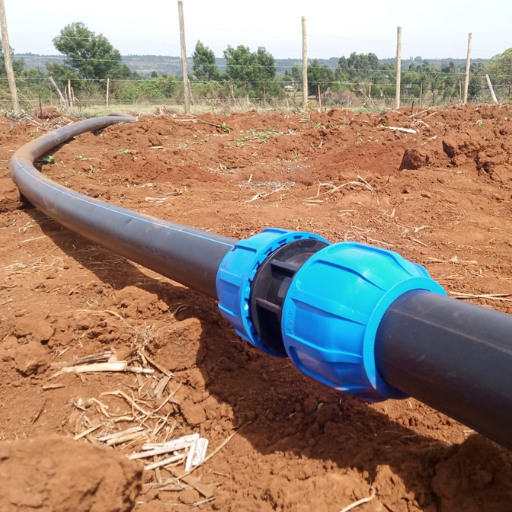
At every stage of a project, best practices are maintained to guarantee successful, compliant, efficient, and durable installations for the 3/4 HDPE Pipe. These practices include but are not limited to the following:
Trenching – Pipelines are installed in a trench and covered subsequently to a depth that protects and supports the alignment of the pipeline.
Horizontal Directional Drilling (HDD) – This is a trenchless method used to install the pipeline under roads and waterways where minimal disturbance to the area is required.
Plowing – This is an installation method that uses plowing devices to simultaneously advance the trench and install the pipe. It is typically used for long distance installations in non-urban areas.
Slip Lining – This is a technique where an existing pipeline conduit is employed to insert the HDPE Pipe. This method is more frequently used to rehabilitate pipelines.
Fusion Welding – This method is mainly used to eliminate the possibility of leaks in pipes and involves the use of butt fusion and electro-fusion to weld the pipe sections.
The longevity and performance of these systems are influenced greatly by the selection of the installation method, and so appropriate considerations in installation sites, project specifics, and existing regulations must be considered.
Fusion Techniques for HDPE Pipe Installation
In addressing the fusion methods for the installation of HDPE pipes, I will discuss the two main approaches based on accepted methods and practice in the field.
Butt Fusion – The butt fusion method is by far the most frequently used technique. It involves joining two ends of the HDPE pipes that have been heated by a heated plate to a molten state. The plate is then removed, and the two ends of the pipe are joined together using controlled pressure. This technique is best suited for high performance large diameter pipes because they are strong withstanding high internal pressure.
Electrofusion – This technique utilizes fittings with embedded electrical coils which when power is supplied to them generate heat and fuse the pipe and the fitting. Electrofusion is very useful in areas that have limited space and necessitates precision in repairs or coping tasks.
During pipeline construction and installation of fittings and accessories, both techniques require proper alignment, tight tolerances, temperature, and cooling time to be maintained. The methods can be relied upon to give leakproof joints essential for the piping system used in gas, water, and wastewater pipelines.
Tools and Equipment Needed for HDPE Pipe Installation
For the installation of HDPE pipes, certain specialized tools and pieces of equipment are required to maintain precision, reliability, and safe engineering practices. Below is a list of absolutely critical tools and their respective technical specifications:
Electrofusion Welding Machine
Tools used for applying controlled electrical current to fittings.
Adjustable voltage and current settings based on 40V to 50V range.
Butt Fusion Welding Machine
Has clamps that align the pipe to the heating plate for uniform temperature distribution.
HDPE materials are best processed from 210 to 230 degrees Celsius (410 to 446 degrees Fahrenheit).
Pipe Cutters
Special rotary or guillotine style that cut perpendicularly.
Cutting blades are oversized for the specific diameter of the HDPE pipe used (e.g., up to 630mm for larger installations).
Scraping Tools
Used in surface preparation for oxidized surfaces before welding.
The joining surface is scraped evenly on all edges to the same depth.
Alignment Clamps
Used for ensuring joint alignment while welding.
Pipe clamps are made for small diameter pipes of 20mm to larger ones of over 500mm.
Temperature Measurement Devices
Includes infrared thermometers or contact thermometers for pipes, plates and ambient conditions.
Marker and Measuring Tools
Permanent markers for marking alignment and measurement.
Measuring tapes or rules with millimeters precision.
Power generator (if necessary)
Able to meet the energy demands of welding machines in inaccessible locations.
The minimum output capacity shall be equal to or exceed the load specification of the welding machine.
It is of utmost importance to apply these tools correctly for each specific purpose which is outlined by the manufacturer so that the installation of the HDPE pipes is successful. Adequate installation preparation, observance of operational parameters and subsequent inspection of the installation will encourage system efficiency in the long run.
Best Practices for Installing 3/4 HDPE Pipe
In my experience and thorough research, there are very important measures and technical parameters that need to be followed to ensure proper installation of the 3/4 HDPE pipe. To begin, the first step is preparing the trench or positioning area. The trench has to be designed in a manner that allows the pipe in question to be placed within it and should include a sand or compacted soil layer which is six inches wide to guard against sharp edges and gapping-bedding surfaces above the said pipe.
Furthermore, during fusion or joint connection, the specified temperature range which is typically 400 degrees F to 450 degrees F for butt fusion has to be maintained. In addition to this, enough cooling time also has to be allowed. Make sure the pipe is not moved or pressurized and if so, confirm the pipe alignment and check for moisture or dirt on the ends of the pipes since these can interfere with the weld and lower its quality.
Be careful not to overbend the pipes during laying as this can lead to a decrease in sthe trength of the DPE pipes. For a 3/4 pipe, the minimum bend radius for these HDPE pipes is 25 times the diameter on the outer side which is about 18.75 inches. Also ensure an adequate amount of support is offered to the pipes at all times to avoid sagging, especially in long run or suspended applications.
Finally, after the setup, a hydrostatic pressure test must be performed to ensure there are no leakage points. The test pressure values are relative to the system application, but a widely used technique is for 1.5 times the operating pressure to be maintained for 1 to 2 hours while constantly observing the pressure measurements and the value for any drops. This parameter, along with other adjustments, is focused on the resiliency and long term dependability of the system as a whole.
What Are the Durability and Longevity Factors of 3/4 HDPE Pipe?
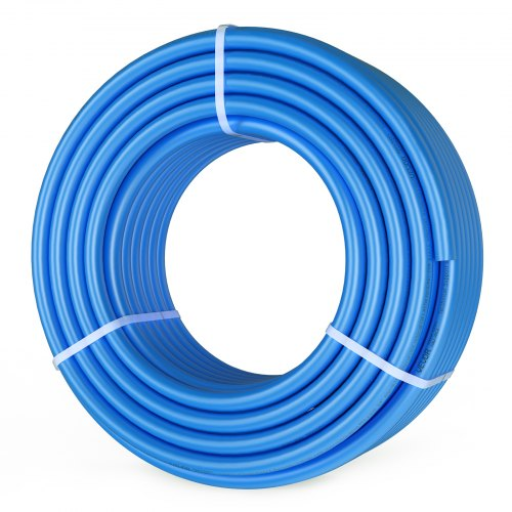
Among the factors that determine the service life of a 3/4 HDPE Pipe is its flexibility which offers impact resistance, enabling the 3/4 HDPE Pipe to tolerate ground movement and external pressure as well as the type of chemical that it is carrying. This naturally reduces the chances of fatigue during use. It is also important to point out that if the UHMWPE Pipe is UV stabilized, its performance will exceed expectations outdoors as it can withstand the effects of prolonged exposure to sunlight. Coupled with that, HDPE pipes are smooth on the inside which minimizes abrasion therefore allowing the pipe to function without wear for a long time. However, in any case, improper installation and non-adherence to the operational instructions may reduce the 3/4 HDPE Pipe’s longevity to 50 years with additional attention to the operative environment and purpose of use.
UV and Chemical Resistance of HDPE Pipe
The structure of High-Density Polyethylene gives HDPE pipes great resistance to Ultraviolet (UV) radiation. When adequately stabilized with carbon black or other UV inhibitors, HDPE pipes retain their physical and chemical characteristics even when subjected to the sun for a long duration. This feature makes them favorable for most outdoor uses when sunlight exposure is constant. In addition, HDPE pipes are highly impervious to many chemicals, including acids, bases, and numerous organic compounds. These features offer excellent durability in chemical environments that can be hostile to pipes. Those features combined with the UV and chemical resistance of HDPE pipes greatly reduce the frequency of maintenance required and increase the service life of the pipes.
Temperature Tolerance and Performance in Various Climates
The pipes exhibit great performance over a wide range of temperatures, enabling them to operate in different climatic conditions. They are flexible in subzero temperatures and do not shatter in freezing environments, while also being able to withstand high temperatures of around 60 degrees Celsius during intermittent exposure. Such performance capability is attributed to their molecular structure providing integrity and strength whilst retaining elasticity. As a consequence, HDPE pipes are more suitable for regions that are cold, hot or change dramatically in temperature and will sustain power for years without faltering.
Expected Lifespan of 3/4 HDPE Pipe
The expected life span of a 3/4 HDPE pipe is greatly influenced by a myriad of elements such as operating conditions, pressure, and other external factors. If the pipes do not undergo standard conditions, like chronic exposure to UV light or having an operating pressure below the HDPE pipes maximum allowable pressure rating of roughly 160-200 psi, they have the potential to last up to 50-100 years. This is primarily due to their increased resistance to corrosion, mechanical wear and chemical degradation which allows them to last significantly longer.
Other important technical factors that impact the lifetime of the pipe include:
Operating Temperature Range: -40°F to 140°F (-40°C to 60°C)
Pressure Rating: High as 200 psi at 73°F (23°C)
UV Resistance: Improved with the addition of outdoor stabilizers
Material Grade: Polyethylene with High density, compliant with ASTM D3350 specifications
If proper installation standards are followed alongside routine checks of operating conditions, the durability and service life of the pipe is increased. As long as the pipes are used within the design parameters, 3/4 HDPE pipes make for an ideal, durable long-term solution for many use cases.
How Does 3/4 HDPE Pipe Compare in Cost and Value?
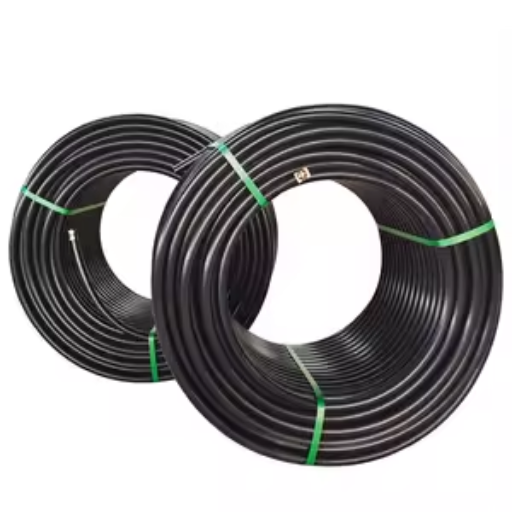
A study of the 3/4 HDPE pipe always entails focusing on cost and value in the context of affordability and return on investment over the years. The AK Pipes have a relatively lower material cost in comparison to copper or steel pipes, minimizing the budget of almost every project. Furthermore, AK Pipes’ lightweight structure cuts down on transportation and installation costs. Finally, the pipes’ durability, corrosion and chemical damage and low maintenance properties mean they have much cheaper lifecycle costs. Taking into account all the extra savings such as dependability, lower resource use, and recyclability, 3/4 HDPE pipe can be used for practically any purpose with greatly reduced negative impact on the environment.
Initial Costs vs. Long-Term Savings with HDPE Pipe
In my opinion, 3/4 HDPE pipes offer the most value in terms of both initial investment and durability. Whilst the material expenditure sometimes appears to be less than that of conventional materials such as copper or steel, the true benefits become clear over time. The corrosion, scaling, and chemical damage resistance of HDPE pipes reduces maintenance and replacement costs significantly. Moreover, their flexibility and low weight simplify installation, reducing labor and transportation costs. Considering these factors together with their increased longevity often more than 50 years with proper installation, I certainly think that most applications can benefit from and justify the cost of using these pipes.
Comparison of 3/4 HDPE Pipe Prices to Other Materials
In evaluating the costs of 3/4 HDPE pipes and other materials such as copper, steel, or PVC, quite a few cost elements need to be thoroughly examined. As per the recent market studies:
HDPE (High-Density Polyethylene Pipes): For high density polyethylene pipes, the price estimation for 3/4 HDPE pipes varies from $0.75 to $1.10 per foot taking into account grade, manufacturer and specifications. Considering its strength and low upkeep, a lot of users prefer HDPE. The material is ideal for applications involving flexibility and resistance to chemicals.
Copper Pipes: For comparison, 3/4 copper pipes have an estimated price of around 3.00 to 5.50 dollars per foot. Although copper offers good resistance to corrosion, it is much more expensive to install and has a high chance of being stolen owing to its scrap value.
Steel Pipes (Galvanized or Stainless): The cost for galvanized steel pipes at 3/4 size is about 2.50 to 4.00 dollars per foot, while for the stainless steel pipes, it can go upwards of 6.00 dollars per foot depending on the alloy. Steel pipes have high strength but are heavy and need regular maintenance to reduce corrosion.
Pvc Pipes: Typically, the cost of PVC pipes ranges from $0.50 to $1.00 per foot for the 3/4 size. PVC pipes are being sold at a lower cost compared to the HDPE pipes, although they do not come close to the durability, impact strength and flexibility that PVC is capable of withstanding in harsh conditions.
Comparison of Technical Parameters:
Flexibility: The minimum bending radius for HDPE pipes is approximately 15 to 18 inches for a 3/4 HDPE pipe. Consequently, they can be bent up to 25 times the outer diameter of the pipe. This offers great leverage over rigid alternative limits such as copper or steel.
Corrosion Resistance: Resistant to corrosion, high density polyethylene is also nonconductive and inert. This means that it does not undergo chemical reactions in both acidic and alkaline surroundings. In addition, these properties make scaling or leakage due to corrosion impossible.
Pressure Rating: Depending on the wall thickness (SDR rating), the standard pressure rating for 3/4 HDPE pipes (PE4710) is between 200 PSI and 250 PSI. This surpasses or is equal to the rating for the majority of steel and PVC pipes.
Lifespan: Under standard operating parameters, HDPE pipes outlive, on average, more than 50 years. For galvanized steel pipes, lifespan is 20 – 50 years while PVC pipes get brittle as time goes on, especially under UV exposure.
Overall, although 3/4 HDPE pipes may not be appealing to some when considering the affordability of PVC piping and the resilience advantages of copper or steel pipes, they represent an excellent balance between cost and productivity which makes them the commonly used option in situations such as water distribution, irrigation and even gas pipelines.
References
Frequently Asked Questions (FAQ)
Q: What is the 3/4 HDPE pipe used for?
A: The 3/4 HDPE pipe is commonly used for water supply systems, including irrigation and residential plumbing. It is known for its durability and resistance to various environmental factors.
Q: Is the 3/4 HDPE pipe recyclable?
A: Yes, the 3/4 HDPE pipe is made from recyclable materials, making it an environmentally friendly choice for various applications.
Q: What is the IPS SDR11 PE4710 Black HDPE pipe?
A: The IPS SDR11 PE4710 Black HDPE pipe is a type of high-density polyethylene pipe known for its strength and performance at standard conditions, such as 73 degrees Fahrenheit. It is often used in water distribution and industrial applications.
Q: How can I manage my account for HDPE pipe purchases?
A: You can manage your account by logging into our website. This allows you to view past orders, check shipping status, and update your billing information.
Q: What are the phone hours for customer assistance regarding HDPE pipes?
A: Our customer assistance team is available via phone during regular business hours. Please visit our contact page for specific phone hours and further contact information.
Q: How can I find the warehouse address for HDPE pipe pickup?
A: The warehouse address for picking up your HDPE pipe orders will be provided upon order confirmation. You can also call us for additional details.
Q: What are the shipping options for the 3/4 HDPE pipe?
A: We offer several shipping options, including standard and expedited services. The actual freight cost will depend on your location and the quantity of the item ordered.
Q: Are there any popular brands that offer 3/4 HDPE pipes?
A: Yes, several popular brands provide top-quality 3/4 HDPE pipes. You can find a selection of these brands on our website, often available for comparison.
Q: How can I make a payment for my HDPE pipe order?
A: We accept various payment methods, including credit cards and online payment systems. Details are available during the checkout process on our website.



